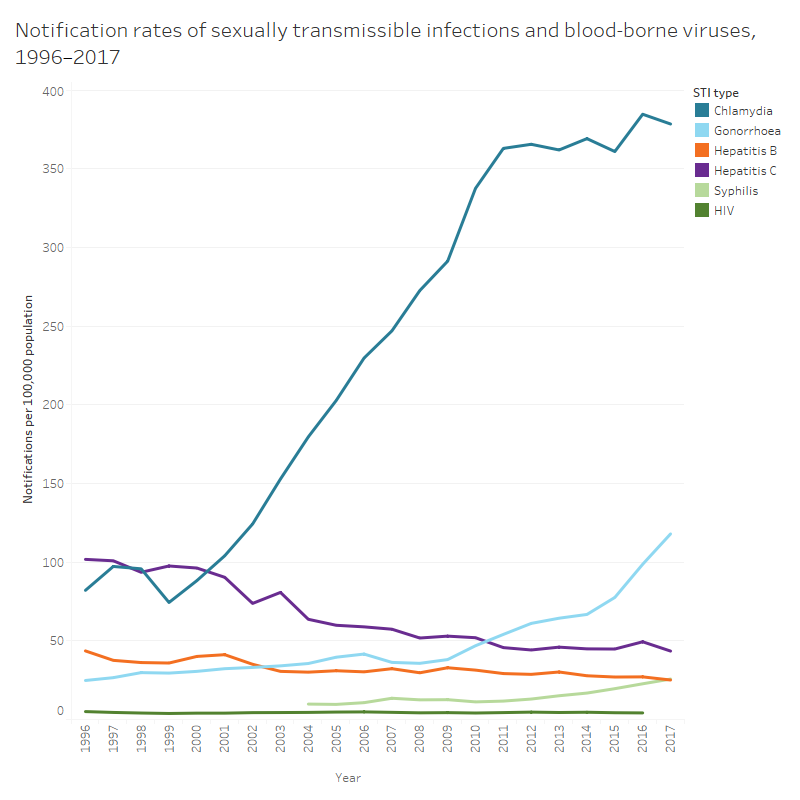Incidence of sexually transmissible infections and blood-borne viruses
Definition: The number of notifications of syphilis, human immunodeficiency virus (HIV), hepatitis B, hepatitis C, chlamydia and gonorrhoea.
Note that the calculation method for notification rates of HIV has changed since Australia’s health 2016. Cases of HIV diagnosed overseas are not included in the data presented here. This means HIV trend data presented here will differ from data reported in previous editions of Australia’s health.

Sources: Kirby Institute 2017b; National Notifiable Diseases Surveillance System; Table S1.4.3.
- Chlamydia notification rates increased substantially between 1999 and 2011 – from 74 to 363 infections per 100,000 people. Since 2011, the rate increased slowly until 2016 when it reached a peak of 385 infections per 100,000 people; the rate for 2017 was slightly lower than for 2016, at 379 infections per 100,000 people.
- Gonorrhoea notification rates have increased since 1996 – most noticeably between 2008 and 2017, when the rate more than tripled from 36 to 118 notifications per 100,000 people.
- Between 1996 and 2003, notification rates of hepatitis B fell (from 44 to 31 notifications per 100,000 people), then remained relatively steady until 2009. Notification rates have since declined slowly to the current rate of 25 in 2017.
- Hepatitis C notification rates decreased (from 102 to 64 notifications per 100,000 people) between 1996 and 2004. Since 2004, the rate has continued to decrease, but at a slower rate, and was 44 notifications per 100,000 people in 2017.
- The rate of syphilis notifications more than doubled between 2004 and 2017, from 10 to 26 notifications per 100,000 people.
- The rate of HIV notifications per 100,000 people fell slightly from 5.0 in 1996 to 4.2 in 2016. Over the past decade, the rate remained reasonably steady between 4.1 and 4.7 notifications per 100,000 people.


